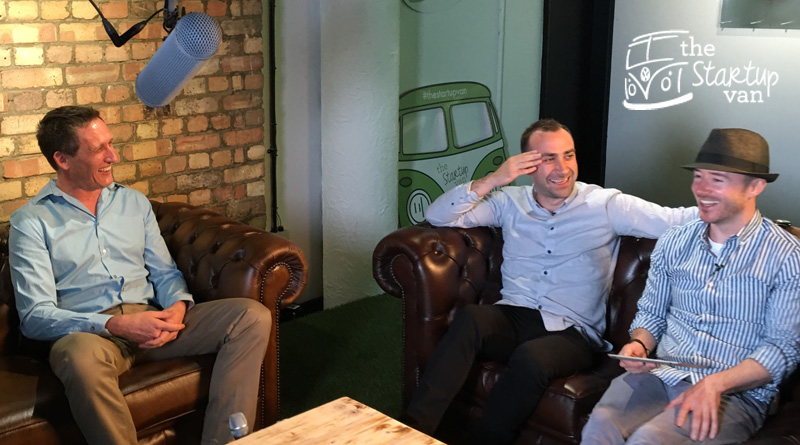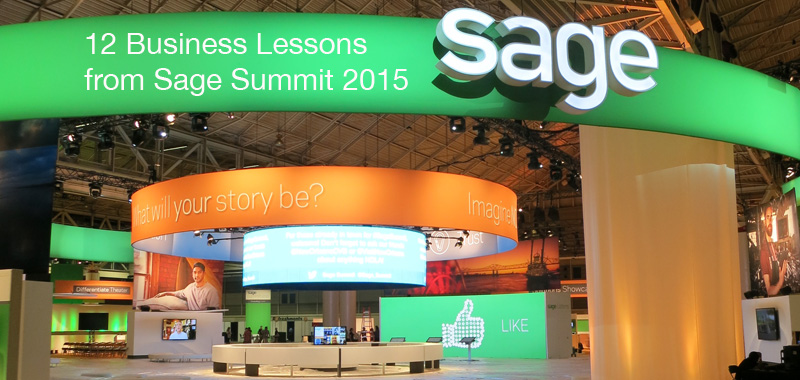
As a Sage Business Expert I was recently invited to attend the Sage Summit 2015 in New Orleans. This annual event is a brilliant opportunity to learn, network and connect with other businesses. Not only does it focus on growing one’s business, for me, it was the perfect chance to sharpen my saw and renew myself for the next phase of our company’s development.
The event consisted of a series of keynotes, seminars and booths that offered a range of experiences throughout the show which looked unlike any trade show I have ever visited before. The scale and scope of it was epic. The central hall layout had a huge circle in the middle laid with plush thick carpet, from which radiated several buzzing seminar theatres each one called things like Profit, Grow, Lead, Differentiate, Customer, etc. The design of the space meant that it buzzed with excitement as one wandered from session to session. It really was inspiring.
I thought I’d share some of my highlights from my week there with you:
 1. When you taste success, spit it out
1. When you taste success, spit it out
On the first morning I ran into business and social media expert, Thomas Power. In the first of several interesting discussions with Thomas at the conference, he mentioned that if you ever taste success, you should spit it out. In other words, don’t spend too long revelling in the taste of it. Whilst it’s important to celebrate success, it’s even more important to to keep moving and not to sit on one’s laurels. It’s this kind of complacency that leads to executives patting each other on the back as they inadvertently walk off a cliff.
2. Zero moment of truth
Marketers have been using a three step mental model of marketing for a long time. 1) Stimulus - producing an advert 2) Shelf - stores focusing on point of sale; historically known as the first moment of truth 3) The Experience - of the product at home. Consumers have a good experience or bad one and they share it. This is also known as the second moment of truth.
Google investigated where influence now takes place as shoppers move from undecided to decided. The average shopper in 2011 used 10.4 sources of information up from 5.3 in 2010. What surfaced was a fourth step called the zero moment of truth. This is where shoppers do research, read reviews, price compare and talk with friends to inform their decision making before going to the shelf. Marketers who can keep on top of all four steps have an advantage in the marketplace.
3. Websites are essential
When I asked a panel of marketing experts how independent retailers could compete with the online world their answers were a stark reminder that the world is changing and those not changing with it will be left behind. “Any retailer without a website is dead in the water,” was one candid response.
The good news is those retailers that have unique identifiers and do it well will stand out from the crowd and survive. Their general consensus also was that blogs drive traffic like nothing else. So if you don’t have a good blog, perhaps it’s time to start thinking about one.
4. Personal Stories Rule
Millennials are often tasked with sourcing suppliers and they use social media tools to influence their decisions. The stories and social media posts that get the most likes are the personal ones. People want to see that brands are human. Include pictures of staff birthdays on your company profiles. Even though your customers might not all be on social media, you can bet their kids are. If you build authentic connections with them, they will send their parents to your business.
5. Creating a club
In discussing changes in retail one evening VP of Marketing at Sage, Sophie Leguillette, told me the story of she once noticed retail store Anthropologie offering a 20% off voucher to anyone joining their Anthro Loyalty Program in store. She asked the staff if there was any incentive for selling the membership to which ‘no’ was the reply.
Instead the assistant raved about useful benefits, like how the program kept records of your receipts for you so you didn’t have to keep hold of them in case of returning items. There were also special offers, advance notice of promotions, etc. Well trained staff offering a club to which loyal customers can belong is a great incentive for encouraging repeat business.
6. Competing with Amazon
At a session on e-commerce I asked the retail experts how independent retailers could compete with the online commerce giants like Amazon. The reply was to focus on value added premium options like engraving, customisation and improved packaging. They also agreed that retailers need websites and when set up there should be sufficient marketing resource allocated to the website to make sure that it is found.
7. Talk Different
If you look at your five main competitors you will often find that the language they use is often very similar to each other and to your own. If you want to stand out from the crowd and win business, then the way you talk about your business and how you engage with customers must be different. Take a look at how you communicate and explore new creative ideas for changing how you behave.
8. Nobody likes to be sold
Everybody likes to buy and yet nobody likes to be sold. These days there is a huge amount of competition for attention in the marketplace, both online and offline. Shoppers now find things at the time and place of their choosing. 68% of the buying decision is now made before purchasing. If you want to be the place consumers choose to purchase these things then you need to spend time building yourself as the expert in such products. Rather than selling the products, sell your story and message. Make sure it’s written down and you have a strategy for how to do this so that your whole team is on board.
9. Small is the new big
Keynote speaker Chad Hurley, co-founder of YouTube, wisely pointed out that great businesses start from improving one small thing. For Chad it was making it easy for him and his friends to post videos online. Many people look at YouTube, which he sold for $1.6 billion (and which now is estimated to be worth over $40 billion), and think it’s all about the big idea. It’s from the little solutions that successful businesses and products emerge.
10. Create Great Content
If you are going to market your business online you must focus on great content and stop focussing on selling. Nobody wants to be sold to. It’s all about placing the products you are offering in a context that is relevant and meaningful to your followers. Be supportive of your tribe. Be a giver not a taker. Be helpful and create the type of content that people want to share because it has value in their world.
11. Feedback Loops
One of my favourite keynote quotes from the whole week was from American designer and thought leader, William A. McDonough, who observed during one keynote session that a system without a feedback loop is, by definition, stupid.
So, if you are making or selling anything, you need to design in feedback from your customers. You’ll also need feedback loops within your business so that your team don’t keep making the same mistakes. It’s worth having feedback loops with your suppliers too, so that the supply chain runs smoothly. Note to self: design more feedback loops into our business.
12. The Secret to Social is Engagement
We are all guilty of counting our followers or subscribers on social media. The real power of social media is the same as that in the rest of our social lives. It's in engagement. What are you doing to interact with your friends on social? Are you sharing, helping and caring? Blasting out ads and shouting our wares is fine at a market but not in a regular social life.
The week was an incredible experience and I loved every minute of it. Thomas Power even coached me through a personal development exercise called the core process, which was the final sharpening of my saw before I left New Orleans and headed home.
I met new friends, learned new things and returned to the UK feeling refreshed and renewed for our business. If you get the chance to go on seminars like this, jump at them. It’s a great way to spend time working on your business rather than in it.
Learn the 9 secrets of social selling I found at the Sage Summit
Discover the 7 habits of highly effective retailers
What cheap greeting cards really say about us

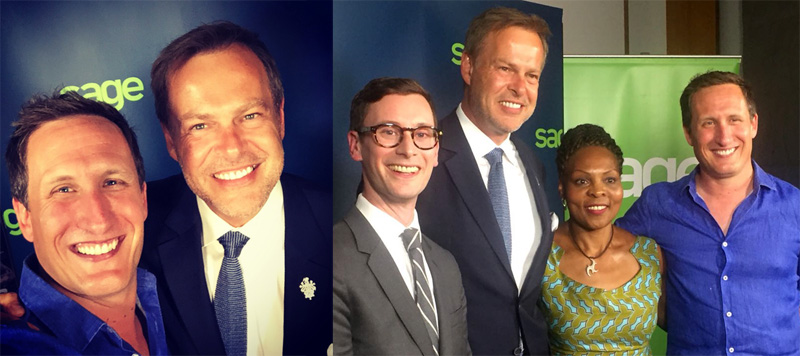







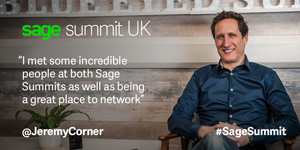 This year I'm attending the business event Sage Summit London, having previously visited Sage Summit in
This year I'm attending the business event Sage Summit London, having previously visited Sage Summit in 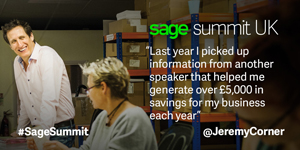 As a
As a 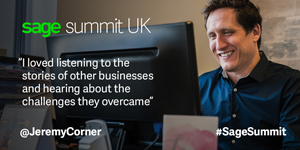 As well as hearing from the keynote speakers there are some interesting smaller sessions in which I'm hoping to pick up tips on retailing online, how retailers can overcome the challenges of the high street and the latest trends in social media and digital marketing. I also plan to see what Sage have been up to with their new software developments and hear more about their new chatbot
As well as hearing from the keynote speakers there are some interesting smaller sessions in which I'm hoping to pick up tips on retailing online, how retailers can overcome the challenges of the high street and the latest trends in social media and digital marketing. I also plan to see what Sage have been up to with their new software developments and hear more about their new chatbot 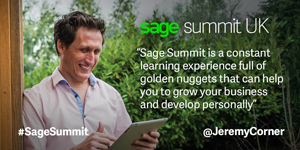 I'm looking forward to catching up with my friends on the Sage Team, my fellow Sage Business Experts and other entrepreneurs in my business community. It promises to be an inspiring and eventful two days. If you feel that it might be time to work on your business rather than in your business for a day or two, why not join me? If you can only do one day, I recommend the Thursday. Do reach out to me on my Twitter
I'm looking forward to catching up with my friends on the Sage Team, my fellow Sage Business Experts and other entrepreneurs in my business community. It promises to be an inspiring and eventful two days. If you feel that it might be time to work on your business rather than in your business for a day or two, why not join me? If you can only do one day, I recommend the Thursday. Do reach out to me on my Twitter 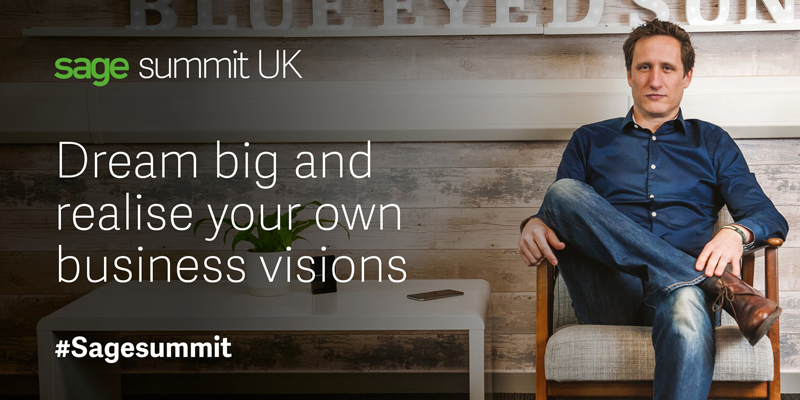
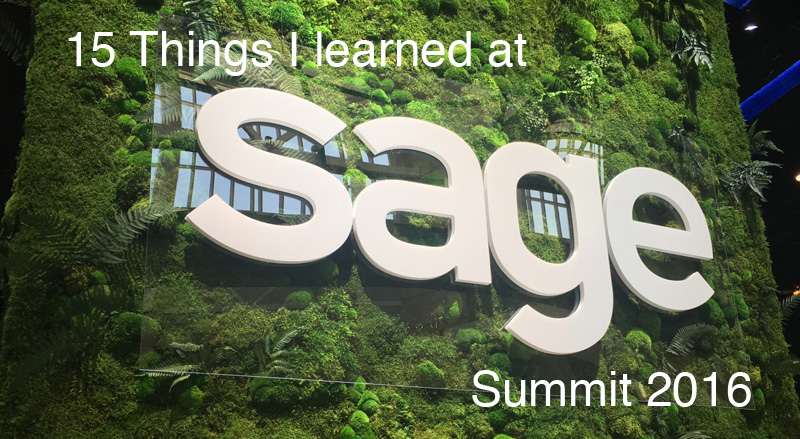 I was recently invited by Sage to Chicago to speak at their annual Sage Summit. The business focussed event, held over 3-4 days, is an opportunity to network, learn and grow. It featured some amazing keynote speakers and loads of smaller breakout sessions and interesting seminars.
I was recently invited by Sage to Chicago to speak at their annual Sage Summit. The business focussed event, held over 3-4 days, is an opportunity to network, learn and grow. It featured some amazing keynote speakers and loads of smaller breakout sessions and interesting seminars.

